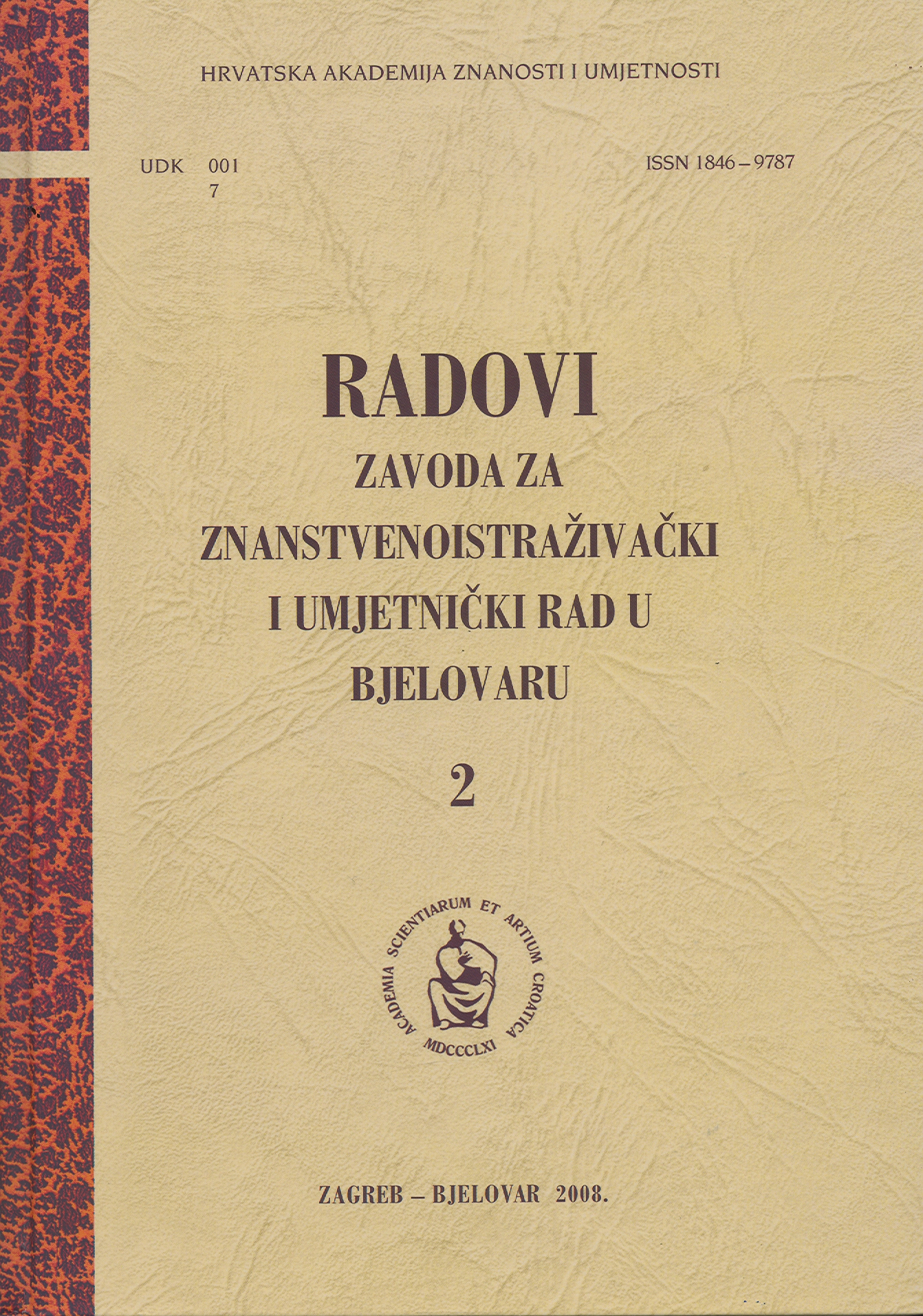Ukinuće Bjelovarsko-križevačke županije i kako je to područje prošlo u vrijeme djelovanja Osječke i Zagrebačke oblasne skupštine 1927. i 1928. godine
The Abolition of the Bjelovar-Križevci County and how this Area Survived the Period of the Active Operation of the Osijek and Zagreb District Councils 1927-1928
Author(s): Mira Kolar-DimitrijevićSubject(s): Politics / Political Sciences, Governance, Economic history, Local History / Microhistory, Political history, Economic policy, Government/Political systems, 19th Century, Politics and Identity
Published by: Hrvatska akademija znanosti i umjetnosti - Zavod za znanstvenoistraživački i umjetnički rad u Bjelovaru
Keywords: Bjelovar-Križevci County; Croatian Peasant Party; district councillors; district committee; Peasant-Democratic Coalition; Independent Democratic Party; Tomislav Pavetić;
Summary/Abstract: In 1922, when the Regulation defining the division of the land into districts was passed, the Bjelovar-Križevci County was the biggest and best-managed county in Croatia and Slavonia. Since 1886, it has grown around Bjelovar, which had, as soon as in 1776, been built by Empress Maria Theresa as the military centre of that part of Croatia. The division of the land into districts was not a simple process; it was only in 1927 that the district autonomy began its active operation following the formation of district councils and committees. The autonomy was supposed to help the state solve its difficulties in the field. The Belgrade authorities were not fond of the Bjelovar-Križevci County, since it was, in addition to being the most prosperous one, also the most rebellious; they therefore decided to divide this area between the Osijek and Zagreb districts. However, the Bjelovar tendencies did not disappear. On the contrary, this area became a strong link between Slavonia and Croatia in realising Radić’s idea of building a better life through autonomy in the districts where the majority of representatives had been members of the Peasant-Democratic Coalition, i.e. followers of Stjepan Radić’s and Svetozar Pribićević’s; in this regard, some of the councillors in both district councils had played rather important roles. The autonomies did, however, not last; a pity indeed, since Radić’s ideas regarding correlating in the economic, tourist, financial, educational and medical senses could have otherwise produced excellent results. Unfortunately, the end to it all had been put by the proclamation of dictatorship, so that never again could such favourable terms for the wishes of the people to be realised have been assured.
Journal: Radovi Zavoda za znanstvenoistraživački i umjetnički rad u Bjelovaru
- Issue Year: 2008
- Issue No: 2
- Page Range: 35-60
- Page Count: 26
- Language: Croatian

